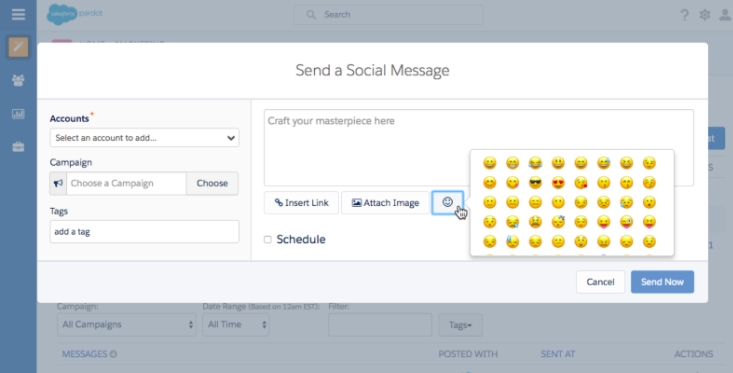First there was direct-mail marketing, then came video and mobile marketing – and now we’re in the era of emojis. Emoji marketing isn’t just here, it’s here to stay. If you’ve already seen some emojis popping up in your inbox or taking over social channels, prepare to see even more.
But for most B2B marketers, adding emojis into campaigns isn’t as easy as it sounds. Many marketing automation platforms simply don’t support emojis. So, even if you try to manually add a heart emoji into an email subject line, the platform may remove it before delivery and it’s likely your audience won’t feel the love.
Other platforms, such as Marketo, may not support emojis natively, but marketers have managed to find round-about solutions that work. Still, the methods take time and effort. Adding emojis in Marketo requires marketers to manually encode the emoji into a string of text, which email applications will later read as an emoji.
Only a select few platforms offer an emoji feature directly integrated into the subject line toolbar. Mail Chimp is a notable and long-time provider, and now Salesforce Pardot is joining the list.
Pardot released a new feature last week that enables marketers to add emojis into the subject line and body of an email, as well as any social media post. Emoji capabilities are Pardot’s latest effort to help marketers personalize content and boost engagement.
“It’s all about engagement and personalization,” said Nate Skinner, VP of Product Marketing at Pardot in an interview with Demand Gen Report. “Emojis are just one more way to help our customers drive that engagement and results.”
Pardot users can now access an emoji keyboard via the building or sending tab in the platform’s advanced subject composer. According to Skinner, emojis are a valuable tool that enable marketers to create customized content that will stand out against other static campaigns.
The good news is emojis aren’t just fun – research shows they actually work.
Research from Mailjet revealed that Americans are 43% more likely to open an email if there is an emoji in the subject line. Another survey from Return Path showed that including emojis in email marketing can not only improve email open rates, but also inbox placement. The company found that emails with the sunglasses-face emoji in the subject line improved open rates from 21% to 23%, and inbox placement jumped from 88% to 93%.
But marketers should use emojis cautiously and sparingly. Choosing the wrong emoji or oversaturating content with emojis has been shown to negatively impact engagement.
For marketers just starting to dip their toes into emojis, it’s a good idea to test emoji marketing with a small sample of your audience, before incorporating them into wide-release campaigns. A/B testing is an effective way to see how your audience responds to emojis and which emojis produce the highest engagement rates.
According to Skinner, emoji capability is just one example of how B2B marketers are learning from their B2C peers and adopting new, innovative ways to deliver content and engage potential customers.
“Every day, people move more and more towards taking good B2C practices and putting them into B2B,” Skinner said. “Those experiences that drive engagement are adapted by good B2B companies.”







